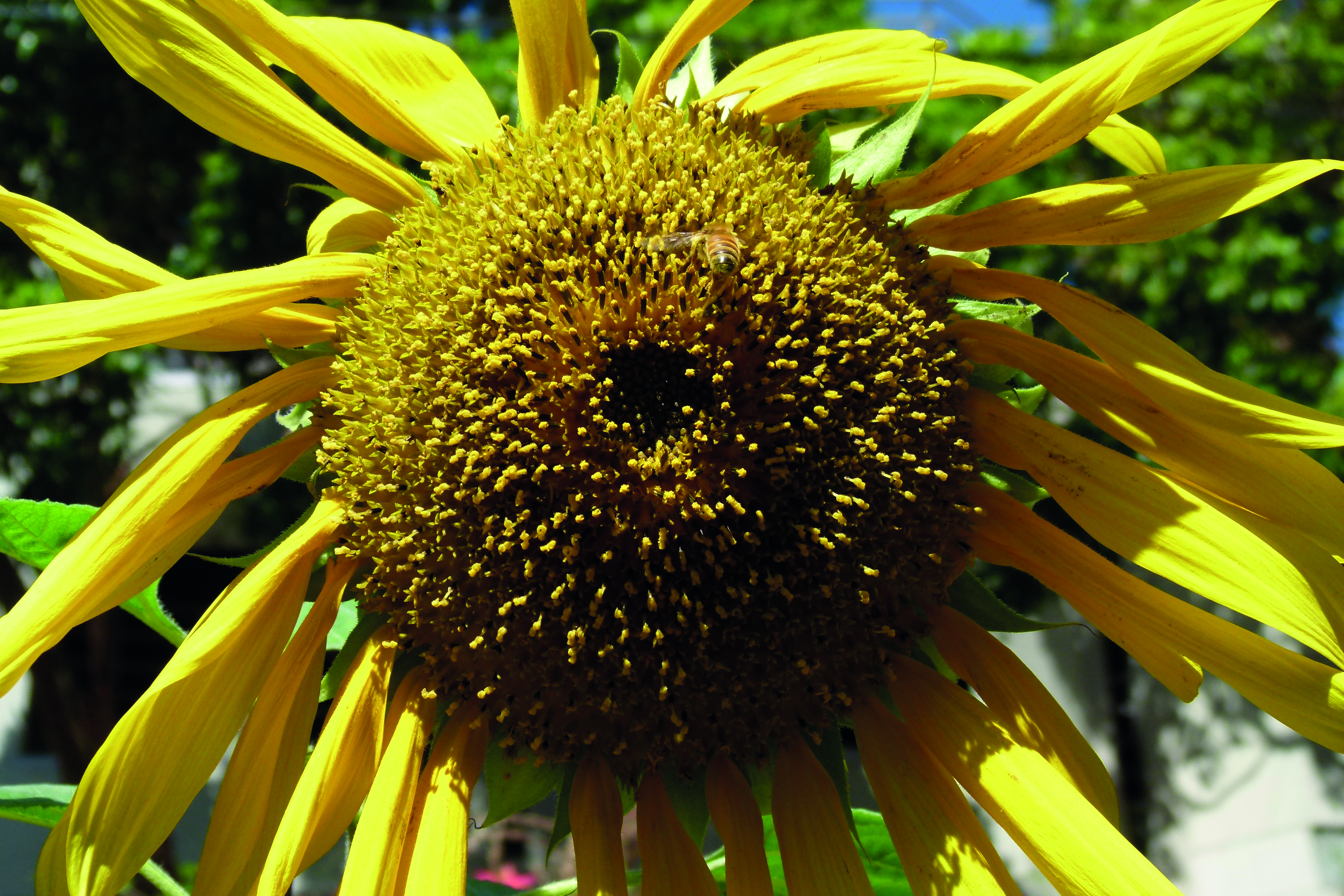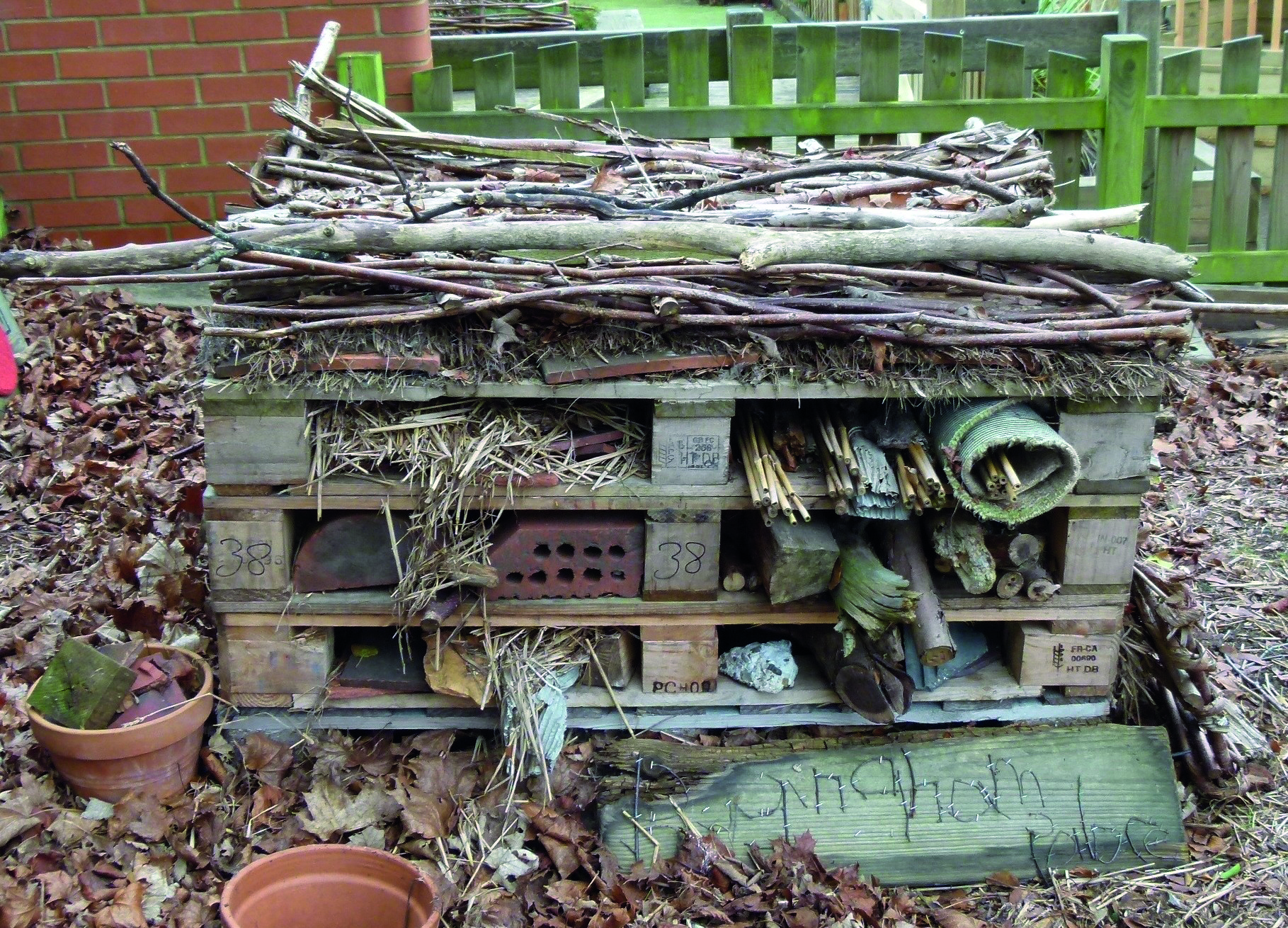
SOW THE SEEDS OF SUMMER

Cultivating plants can be as simple or as complex as you like. The simplest project could be sowing salad cress seeds onto damp kitchen paper. March is the time to get more ambitious projects under way – such as sunflowers, for a stunning summer display and harvestable seeds in the autumn.
Before sowing any seeds, go outside with the children and work out where the seedlings will be planted out once they’re big enough. The ideal location will depend on the weather you expect, what kind of seeds you’re sowing (for example, food crops or flowers) and how easy it will be to protect them from overenthusiastic ‘care’ or boisterous play.
Other simple and quick-to-grow seeds include sweet peas, beans, poppies and carrots.
Resources: There are more than 70 kinds of sunflowers, so try a few or buy a mixed pack; seed trays (or just clean, shallow food trays); potting compost; pencils or pens; scissors; lollypop sticks; sticky tape; small watering can with a ‘rose’ head on it. Later, you’ll also need some garden canes and twist ties to help keep the sunflowers upright.
- If you’re using recycled seed trays, you may need to make a few holes in the base to allow water to drain away.
- Place a layer of potting compost into the trays, gently pressing it down.
- Use pencils or marker pens to create small indentations for the seeds. Check the packet to see how deep each needs to be. Sunflowers need to be planted ‘pointed’ end up.
- Drop a seed into each indentation – picking the seeds up and dropping them in is a fantastic finger and wrist muscle exercise – then cover them over with a little more compost, tapping it gently.
- Make ID signs from the seed packets – tape them onto lollipop sticks and push these into the seed trays.
- Lightly water the seeds and place them on a sunny windowsill. Check for growth every day, and water lightly when needed – a layer of cloth or kitchen paper underneath the trays might save your windowsill from excess watering!

‘Our Garden in 2021’
FOR THE RECORD…
The story of your sunflowers would make an excellent floorbook in itself – remember to include each stage of the seeds’ growth, along with examples of children’s label designs, growth sketches and photographs – and finish off by sticking some of your own harvested seeds into the floorbook.
Story to share
 Baby Bird by Andrew Gibbs, illustrated by Zosienka
Baby Bird by Andrew Gibbs, illustrated by Zosienka
This heart-warming story of a baby bird who overcomes adversity with the help of a friend is exactly right for March. The tender watercolour illustrations enrich the story, not least the first two pages, which show a bird’s-eye view of birds flying – lots to discuss there. Why not go nest-hunting, and then build yourselves a cosy outdoor nest to read the story in?
Looking ahead
MAKE PLANS TO…
- Look out for nests, eggs and dead birds. Sadly, April’s wind and rain often destroy birds’ nests, and bigger birds see fledglings as a meal for their own babies. This means it’s not unusual to find eggs or even dead fledglings on the ground. Nests, eggs and dead baby birds are fascinating for children of all ages. I always save a spot in my freezer (no, really!) so that I can keep a dead bird until I’m ready to share it with the children.
- Celebrate Earth Day on 22 April. It’s a global event to celebrate our unique planet and promote awareness of its fragilities. Plan events and activities so that children can begin to develop an understanding of their role in keeping themselves and their planet healthy. Visit: www.earthday.org.
Maintenance jobs
IT'S TIME TO…
- Some of your plants will benefit from early season pruning. If you have summer-flowering shrubs such as buddleia, lavender or ornamental grasses, they can be cut back hard, to encourage vigorous growth over summer. Plants you’ve been saving for their seed heads (such as teasels) can now be cut back.
- If you have fruit trees, soft fruit shrubs (e.g. blackberries) or new plants, give them plenty of mulch around their bases to help retain water and nutrients. Tell the children that mulching is like a warm blanket for plants.
- Later in March, borrow a pressure washer to give your paved surfaces – tarmac and pathways – a through clean. Sheds and fences might also benefit from a pressure wash, particularly if they are north- or east-facing.
Nature watch
LOOK OUT FOR…

Birds’ nests: From early February, birds are busily building nests ready for mating. Early March is excellent for nest-spotting, when leaves are still sparse on most trees. Look at pictures of common garden birds and compare their sizes and the number of eggs they usually lay. Can children speculate about which bird lives in which nest, based on their relative sizes?
Why not use your setting’s stick collection (of course you have a stick collection!) to build giant nests for a twist on the ‘home corner’?
Daffodils: The first thing to spot is narrow, bright green leaves in bunches. Next comes a paler stem, with a ‘fat’ part at the top that is nurturing the yellow trumpet flower. Keep visiting the daffodil patch – the flowers could easily burst out during the course of a day.
Frogspawn: Do you have a pond in walking distance from the setting? If so, March is a gorgeous time for nature walks and you’re likely to spot birds’ nests and daffodils on the way to the pond. Take a container and a dipping net with you to collect a small amount of frogspawn to examine up close – but do return it carefully to the pond afterwards. If a child has a pond at home, you could ask for a small amount of frogspawn to keep in the setting, watching as the micro dots transform into wiggly commas…!
Search online for a detailed diagram of a frog’s life cycle – I find the ones designed for young children are unconvincing, especially given children will notice even tiny changes in the embryos and tadpoles, every day.
Risk assessment
WATCH OUT FOR…
Berries: Delicious-looking berries begin to appear in spring. Remind children that they don’t eat anything from the garden unless they’ve checked with you first. While few berries are seriously harmful to humans – even very small humans – many will give a child an upset tummy.
Mud: Try to keep pathways free of mud, and if we have a particularly wet spring, a bale of straw can be a valuable investment – place layers of straw over muddy areas likely to become hazardous rather than fun.
Visibility: As trees and shrubs begin to thicken, remember that it’s perfectly acceptable to be able to see OR hear children when they’re playing outdoors – it doesn’t have to be both. However, if there are areas of your outdoor space that are likely to ‘envelop’ children entirely, consider cutting back or thinning out branches to improve visibility.
Resources
BEG, BUY OR BORROW…

Umbrellas so that children can make the most of April showers. I recently asked for used umbrellas on my local Facebook page and was inundated with offers – now a whole class can play out in the rain.
Unused seeds: Seed bombs are very easy to make – roll small balls of clay in a tray of mixed seeds, then launch the balls into a soil area in the garden… who knows what might grow there?
A motion-sensitive wildlife camera if you have a bit of ‘end of year’ budget left. Good-quality cameras have come right down in price in recent years and the images (or video clips) are excellent. Set up the camera somewhere you know birds or small animals frequent and encourage them further by leaving food out for them.
A new project
BUILD A BUG HOTEL

Build Bugingham Palace for the minibeasts at your setting. These can be hugely complicated (and very expensive), but they needn’t be. The very simplest bug hotel could be made from a wooden drawer organiser, leaned against a fence and with each compartment filled with something interesting for a bug to burrow into.
A more permanent habitat can be made from timber pallets – which are easy to source, usually for no cost. It is also possible to source almost all of the contents for little or no money.
Three or four pallets stacked one above the other gives several deep spaces for bug housing to be inserted. Ensure you and the children have gardening gloves when handing the pallets and the contents of the bug hotel – there will be plenty of splinters and mud.
Choose an ‘out of the way’ place for your bug hotel, and make sure it’s located on a very solid base, so it can’t tip over. Screw each level to the one below it, for extra stability. Then fill each level with luxury bedding:
- At ground level, hedgehogs could hibernate: use broken terracotta pots (‘crocks’) and straw to allow them to hide.
- In intermediate levels, a wide variety of items can provide homes for small creatures: air bricks (the ones with holes in), bamboo canes, sticks, straw, clay or slate tiles, logs and branches, dried seed heads, pebbles and rocks, natural wool – and pretty much any other natural material you can find.
- Drill holes into some (not all!) of the wooden blocks that separate the pallets, using a variety of different drill-bit sizes. This will encourage bees and burrowing beasties.
- Line the top of the pallets with plastic or weed-suppressant material, and fill it with compost, then plant it out with grass seeds, herbs, sedum or wildflowers – a restaurant with a view for nectar-loving bugs.
Check several times a year to ensure objects are snugly fitted and no sharp edges protrude from it.









